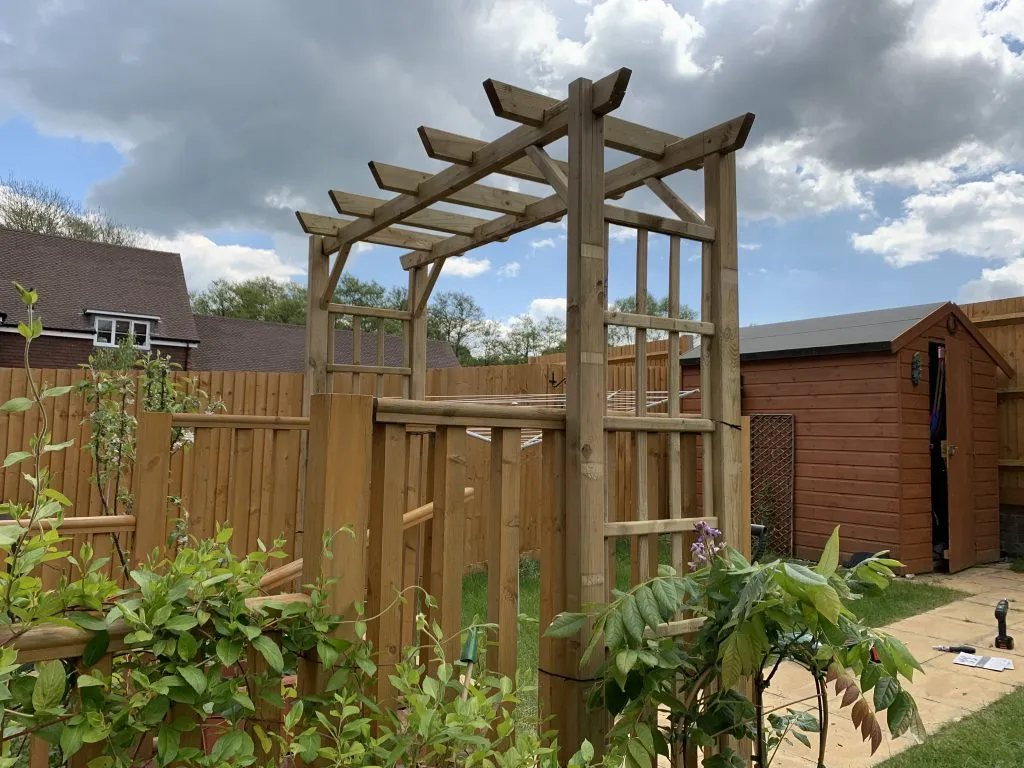Alter Natives: designer John Willshire moved into a Sussex new build, then rewilded his barren patch into a full ecosystem
From barren 2016 to fecund 2023
We think this counts as an Alter Natives story - from a designer, John Willshire, who decided to plan and generate a full eco-system, in the barren back garden of his Sussex new build house.
We point you to the original blog, which is rich with photographs of the changes and arranged on a meticulous time-line of the last seven years (a few of which are posted below).
But we will print his introduction - and then John’s closing thoughts, on what his experience suggests is needed to get developers and communities to explore his pioneering work.
John WilLshire:
In 2016, we moved to a wildlife desert.
It was a new build estate in Sussex, which had been essentially scraped clean of any nature in order to build the houses, roads and other infrastructure that would support the new development.
This was long before the Biodiversity Net Gain clause in the 2021 Environment Act, which requires developers to plan and get approval for a minimum 10% gain (calculated using Biodiversity Metric) in habitat, which is secured for at least 30 years.
Luckily, I take photos often, and of a lot of things. So nowadays, given everything’s stamped with metadata, I can look back and see which garden pictures we have, and from when, so I can tell a story of what happened before, and afterwards.
At the start
What was the garden like when we moved in? It’s probably a typical new-build story; some turf laid over rubble and builders rubbish (oh, the things we’ve dug out of the garden in the interim years), and then some woodchip and selection of small bushes.
The front garden space isn’t huge, and just ‘neatened’. I can understand the argument that some people don’t want much in the way of maintenance in a garden, especially as they move in, but it certainly feels that there would have been an opportunity to inspire people differently.








….I can’t quite believe it’s been seven years already, and how much of a difference that moment of getting the camera in 2019 has made. As promised, now on to some reflections as to what it makes me think about when doing this at scale, across whole estates, towns, and the country as a whole, especially given the 2021 Environment Act 10% Biodiversity Net Gainconditions for developers.
Planning Collective Efforts
Our garden is just one across the whole development. Other people have done things in their gardens, some haven’t. But they are so infrequently talked about by people in the collective context. Yes, you might well talk to your closest neighbours, but there’s no provision in the planning on emergent communities that might collaborative efforts easier.
Imagine if every spring for three years whilst the development was filling up with new families, the housing developer had run a ‘planting plan’ weekend. Turn up with a few hundred whips for hedges, a few hundred bedding plants, and a leaflet on how to attract nature to your garden.
What’s more, you would start to draw together people and families interested in making a difference at the point where they can rapidly accelerate regeneration of the natural environment.
Regulations and Incentives Matter
A different example from our doorstep of the impact which regulation and incentives have. We live on the side of the estate which was completed around Christmas 2015. Each house has solar panels installed, as it came before the government slashed solar panel subsidies for house builders.
I can look across right now to the other side of the development, where every house was built without solar panels. Even now, after the energy crisis, only a few houses have had them installed. It is maddening, and wholly predictable.
But it does show how quickly housing developers will react to changes in what they’re expected to deliver. Now imagine that building new houses in the UK came with a mix of regulations and incentives that prioritised not just the broad but set out some specific mixes of ways this could be achieved.
From our experience, then, here’s an initial list of things that would have made a difference when we started:
Let nature in, and stop fully sealed brick enclosures around gardens
Mandatory borders, ready for planting
Only pre-plant native species in gardens for handover
Locally specific nature guides to quickly restore areas
Ensure soil quality by removing all builders rubbish
Having watched a new build site emerge over the last seven years, and thinking about the challenges ahead in protecting biodiversity in the UK, I feel strongly that much more can be done, and it isn’t actually that hard to do.
Original column here. There’s more explanation there on the “citizen science” dimension of this - using photography to make a case for more biodiverse and regenerative practice in housing developments.


